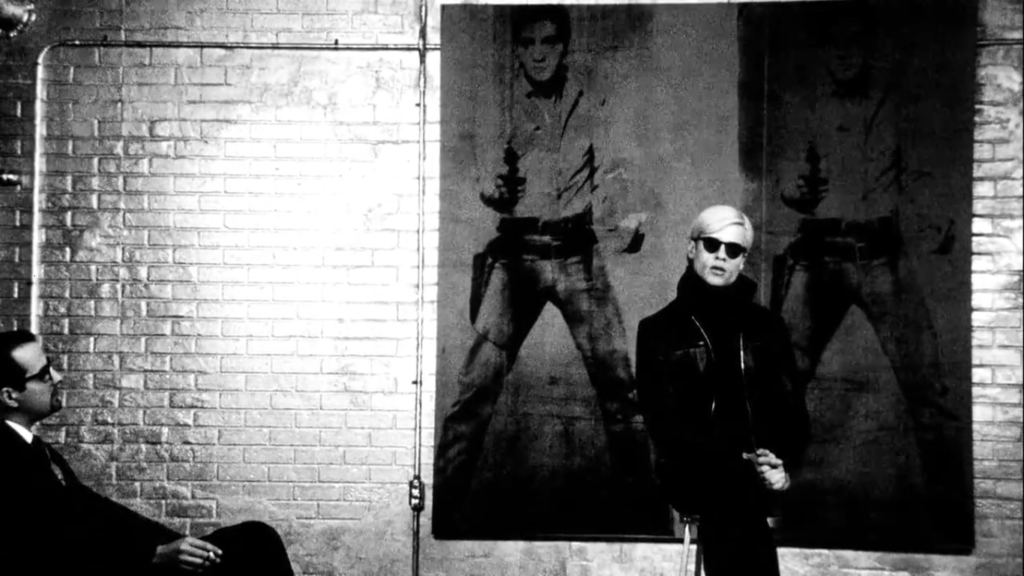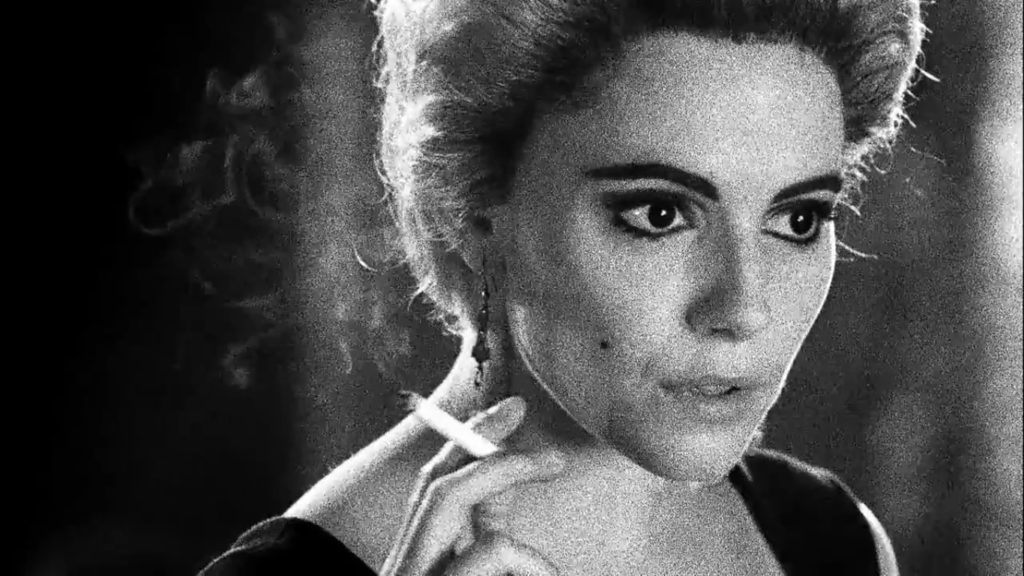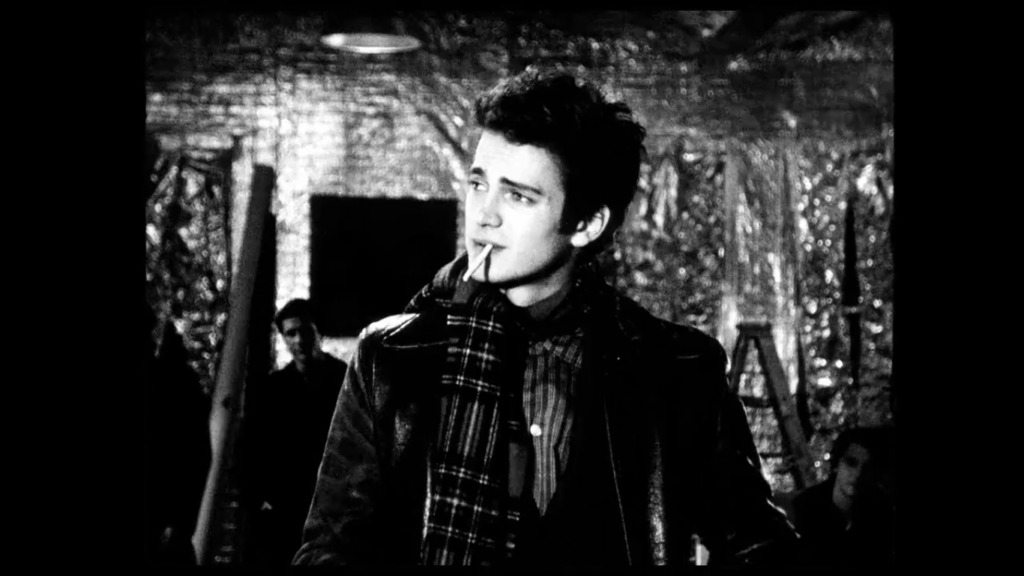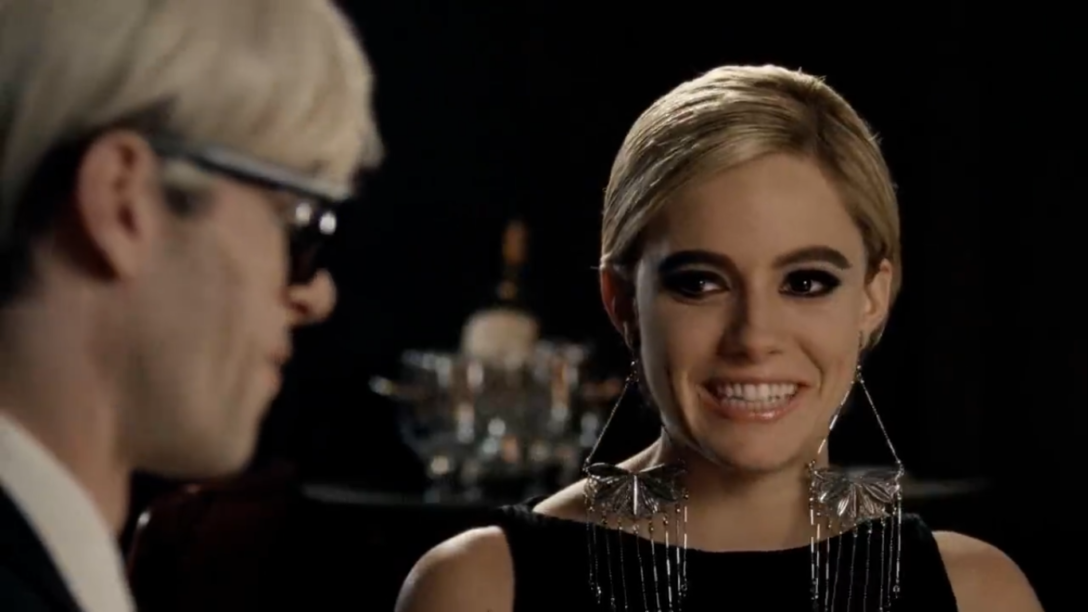Factory Girl is a biopic of the life of silver-haired sixties socialite Edie Sedgwick, who was the Paris Hilton or the Kylie Jenner of America before those two were even twinkles in their father’s eyes. The plot charts the rapid rise and then the rapid fall of the troubled young woman, as she suddenly finds herself as muse for the decade’s most daring artist, Andy Warhol, and is then cast aside almost as quickly.
The first time I watched Factory Girl was when I was in high school because I was really interested in sixties culture at the time, and it was also probably when I was learning about Warhol and pop-art in art class. To really help you understand just how long ago I watched this film, I watched it on a DVD that I rented from a Blockbuster. Remember either of those things?
I remember watching the film and being really entranced by Edie Sedgwick. She seemed so fun and so carefree at first, and I can say without remorse that I rocked more than one eyeliner look inspired by her. I also remember being really saddened by what happened to her in the film – she was a vulnerable girl who was constantly let down by those who claimed to be friends.
Now, watching Factory Girl again as an adult, both of those original thoughts still remain. I still want to slather on half a kohl stick around my eyes and I still feel desperately sad for what happened to poor Edie Sedgwick. I’ve just realised now though that there’s ninety minutes of pretty ordinary film-making surrounding those two thoughts.

Factory Girl Sienna Miller as Edie, and as far as casting choices go, she’s pretty much perfect for the role. Not only does she have Edie’s look, she nails her attitude and mannerisms. The costuming is absolutely excellent (one of the highlights of the film, I would say), and Miller does a really good job of imbuing the character with an irresistible extroverted-ness, making it clear to see how so many people, Warhol included, would have been absolutely entranced by Edie Sedgwick. The film is framed as Edie’s recollections to someone in a hospital in 1970, five years after her time in the spotlight with Warhol. There’s nothing particularly wrong with this kind of framing device, it’s just that the film seems a bit at odds with what it wants to be sometimes. Sometimes it’s a regular narrative film, sometimes it’s flashbacks recreated as documentary-style footage, sometimes it’s near shot-for-shot recreations of Warhol’s films like Vinyl, or iconic photographs of the two. It’s no wonder then that the director, George Hickenlooper, is known for his documentaries as well as his narrative film, because he seems to be trying to make both at the same time here. Some of it is quite stylishly done, some of it seems unnecessary.
Edie starts off in the film as a bright-eyed artist keen to go to New York, where she meets Warhol (Guy Pearce) and he becomes entranced with her. I think that Pearce is as well-cast as Warhol as Miller is as Edie. Not only does he have the physical look down-pat, he also has all of Warhol’s affectations, such as the drawling, monotone voice, the long pauses between speaking and the gum chewing. Warhol quickly becomes obsessed with Edie, and it is implied that his obsession stems from his own unhappiness with his physical appearance and his desire to be “beautiful” like her. Warhol is presented in Factory Girl as a bit of a voyeur, almost quite repulsive in the way he acts towards Edie. For example at the start of the film he says that she looks like a “beautiful boy” and he is always staring either at her or a photograph or her. Pearce does a good job of this, but I don’t think the film really makes the root of Warhol’s obsession with Edie as clear as it could be. The film presents us with the idea that Warhol not only wanted to be Edie, he wanted her to want to be him, therefore he was incredibly jealous of anyone who she wanted to spend time with over him. When Edie begins a relationship with Really-Not-Bob-Dylan-We-Swear (known in the film as Billy Quinn and played by Hayden Christensen), Warhol apparently feels like she is done with him, so he quickly becomes done with her. Warhol was known to be a closed-off, even cold person. The film implies that it is this coldness, this jealousy, this sense of “if I can’t have her, nobody can” that in part drove Edie towards her eventual demise.

Now, Edie’s demise. As it’s a biopic and we already know what happened to the real Edie Sedgwick, it’s not a spoiler for me to tell you that she dies at the end. Poor Edie died of a barbiturate overdose at the age of twenty-eight, a death that was made all the more tragic by the fact that she had been seeking treatment for her drug problems. In terms of Edie’s death in the film, Factory Girl points a pretty big finger of blame at Warhol and Not-Bob-Dylan for both essentially abandoning her. While I’m not saying this is untrue, in Warhol’s case at least, as it is well-known that the flame of their relationship burnt out nearly as quickly as it was lit, the film does not make it clear enough that Edie had quite significant pre-existing mental health problems. Edie had a troubled childhood and a serious drug problem and the film needed to spend more time on showing that to paint a more rounded picture of the many factors that led to her troubles in the latter years of her life. Because it skimps on these details, it severely detriments its portrayal of Edie as a person – because we don’t know enough about the mental health problems that are fuelling her actions, Edie initially just seems to be coquettish and impulsive and fun-loving, and then just drug-addicted, abandoned and sad. We don’t really know that the reason for her impulsivity stemmed from abuse, or that she clung so hard to Warhol and Not-Bob-Dylan-We-Absolutely-Swear-It because she had a severe lack of love from male role-models in her life. We can guess at those things but the film is over before it really gives us any concrete confirmation. Adding another thirty minutes to the run-time would likely have solved this problem.
Factory Girl‘s length and its treatment of its central character is my main gripe, but I also have to mention some of the mediocre acting and casting choices. First of all there’s Bob Dyl- I mean Billy Quinn, who I mentioned before was played by Hayden Christensen. I think in terms of physical appearance the casting choice is really accurate, especially because wardrobe gave him a never-ending selection of sunglasses and he, like everyone else in the film, just chain-smokes constantly, but the actual performance is… just fine, at best. It’s clear that Christensen did some research into the person he was supposed to be playing (officially not Bob Dylan but also clearly Bob Dylan) and does a pretty good approximation of that person’s mannerisms, but that’s the problem: it’s only a pretty good approximation. It’s a performance that comes off as someone trying to do an impression of someone else, not someone just being someone else. Sienna Miller’s performance never feels like “Sienna Miller doing an Edie Sedgwick impression”, she just is Edie Sedgwick. Hayden Christensen’s performance really is just “Hayden Christensen doing a Bob Dylan impression” (look, the whole Billy Quinn thing is stupid and I’m not buying it). Then there’s Jimmy Fallon, who plays Chuck Wein, a friend who came with Edie to New York and quickly embroiled himself in life at The Factory. It’s really hard to take Fallon seriously, especially as he’s wearing a god-awful blonde wig that looks like it was from a child’s dress-up box. Fallon hasn’t really taken on any more serious film roles since, and that’s probably a good thing, as he just felt really out-of-place here. He broke the immersion of every scene he was in.

All in all, Factory Girl is nowhere near the heights of other “tragic-or-cautionary-tale” biopics. I felt sorry for Edie, sure, but now I realise that a lot of that sympathy comes from knowing what contributed to her problems based on my own personal research of her – I certainly didn’t get that information from the film. Factory Girl has some great casting choices and some stylish moments, but for a more balanced view of all people involved, especially of Edie and Warhol’s relationship, you’re better off looking elsewhere.
BEST BITS
– The attention to detail paid to Edie’s wardrobe is outstanding.
– They did a really good job of recreating Warhol’s films.
WORST BITS
– There is so much gratuitous nudity on Miller’s part – for example, there is a scene where Warhol and Edie are both in the bath and having a telephone conversation, and of course Edie has to be stark-naked when Andy doesn’t.
– The sex scene is barf-inducing. All of the shots are so weirdly unsexy and the music sounds like it’s from a porno, unlike the rest of the film’s score which is mostly appropriately sixties-themed.
FINAL RATING: 6/10
More like this: Should You Watch Marriage Story?
